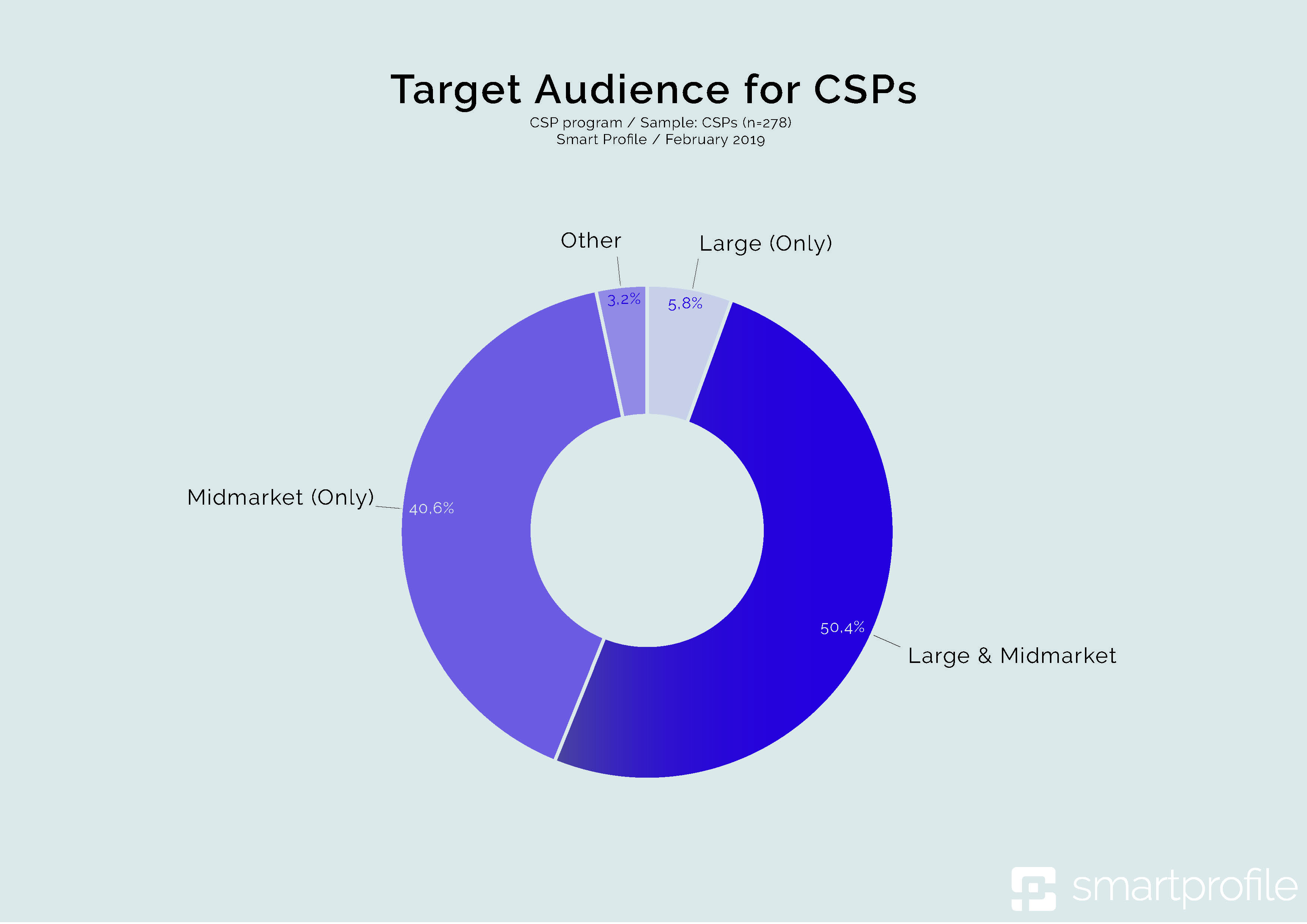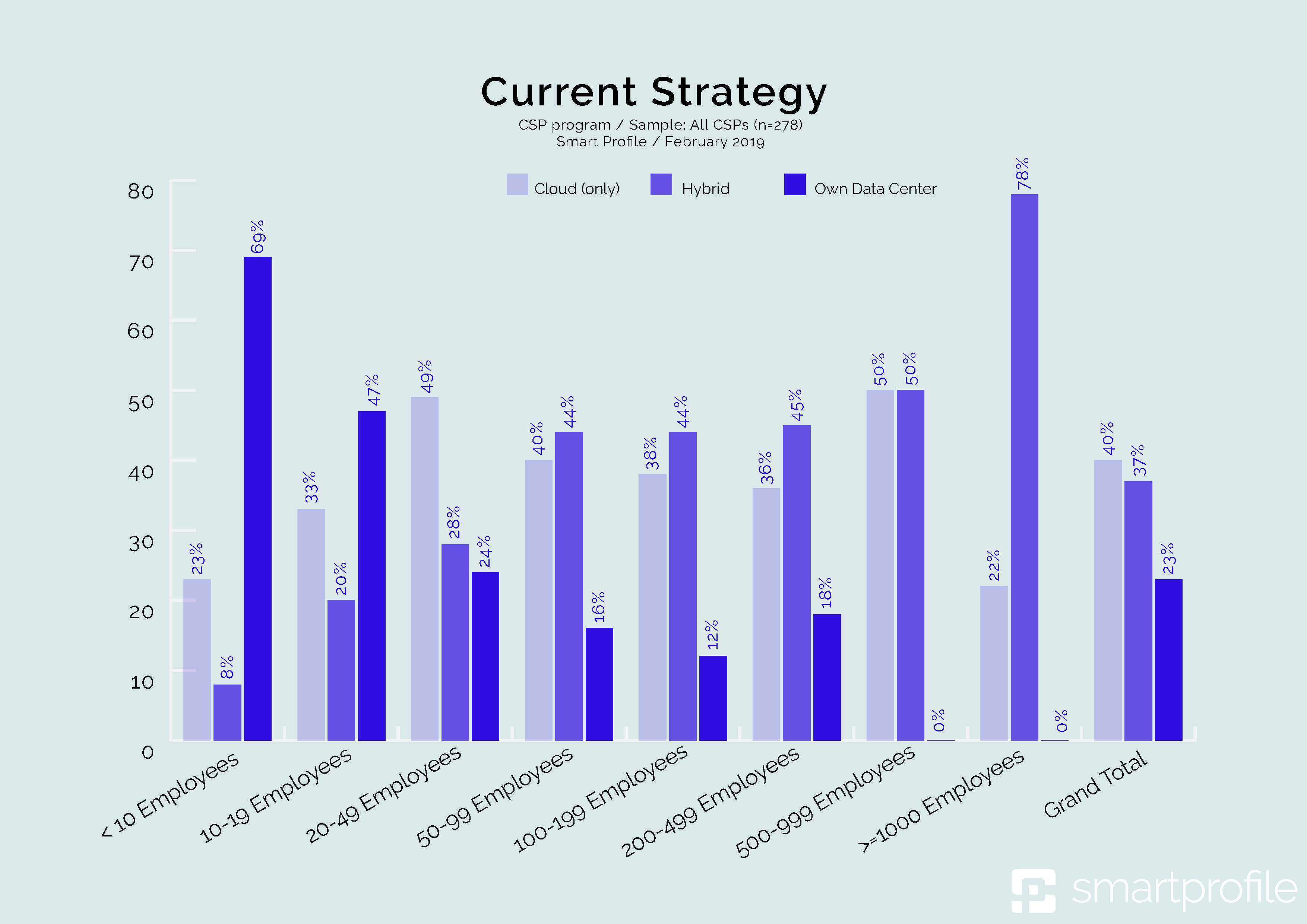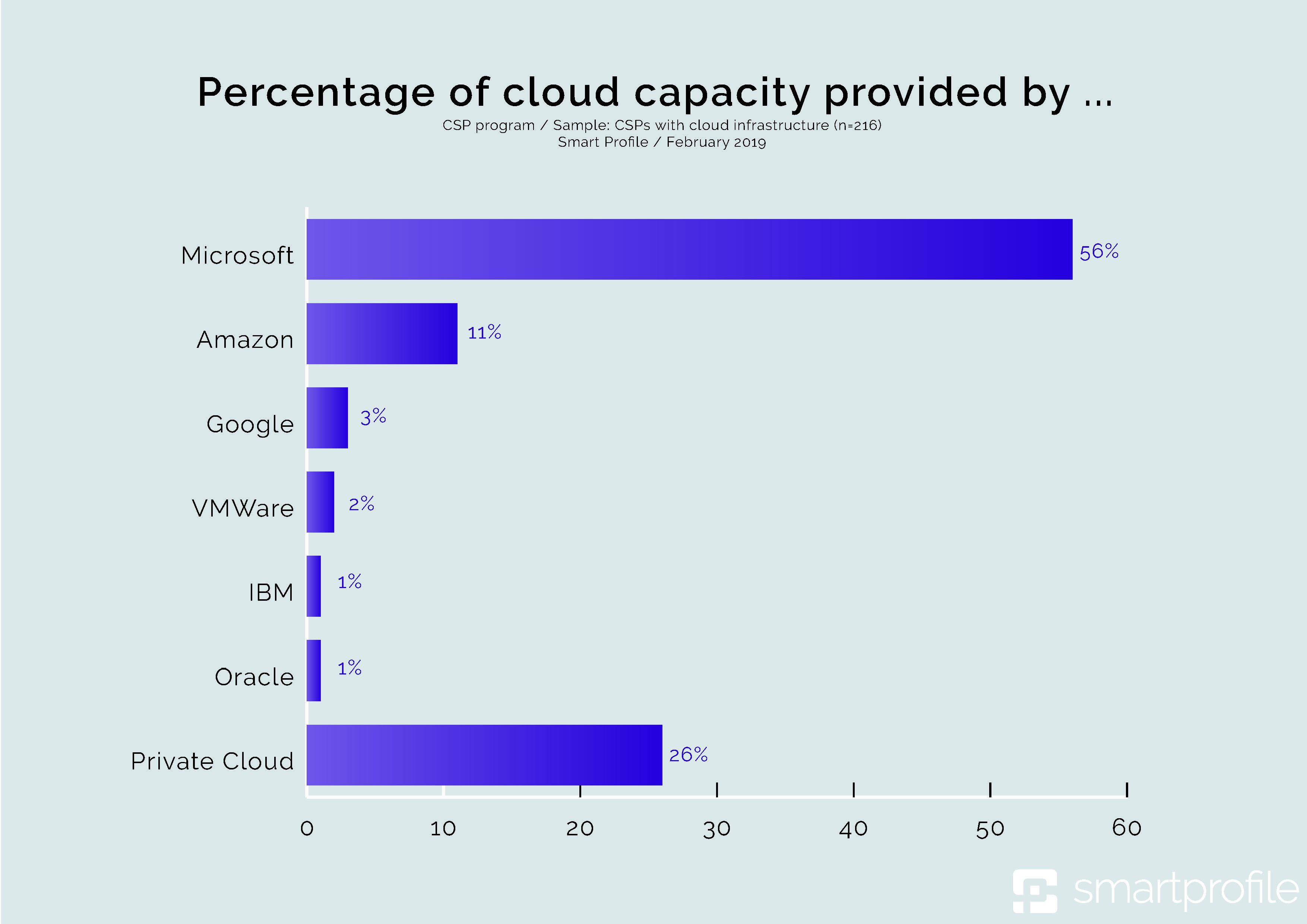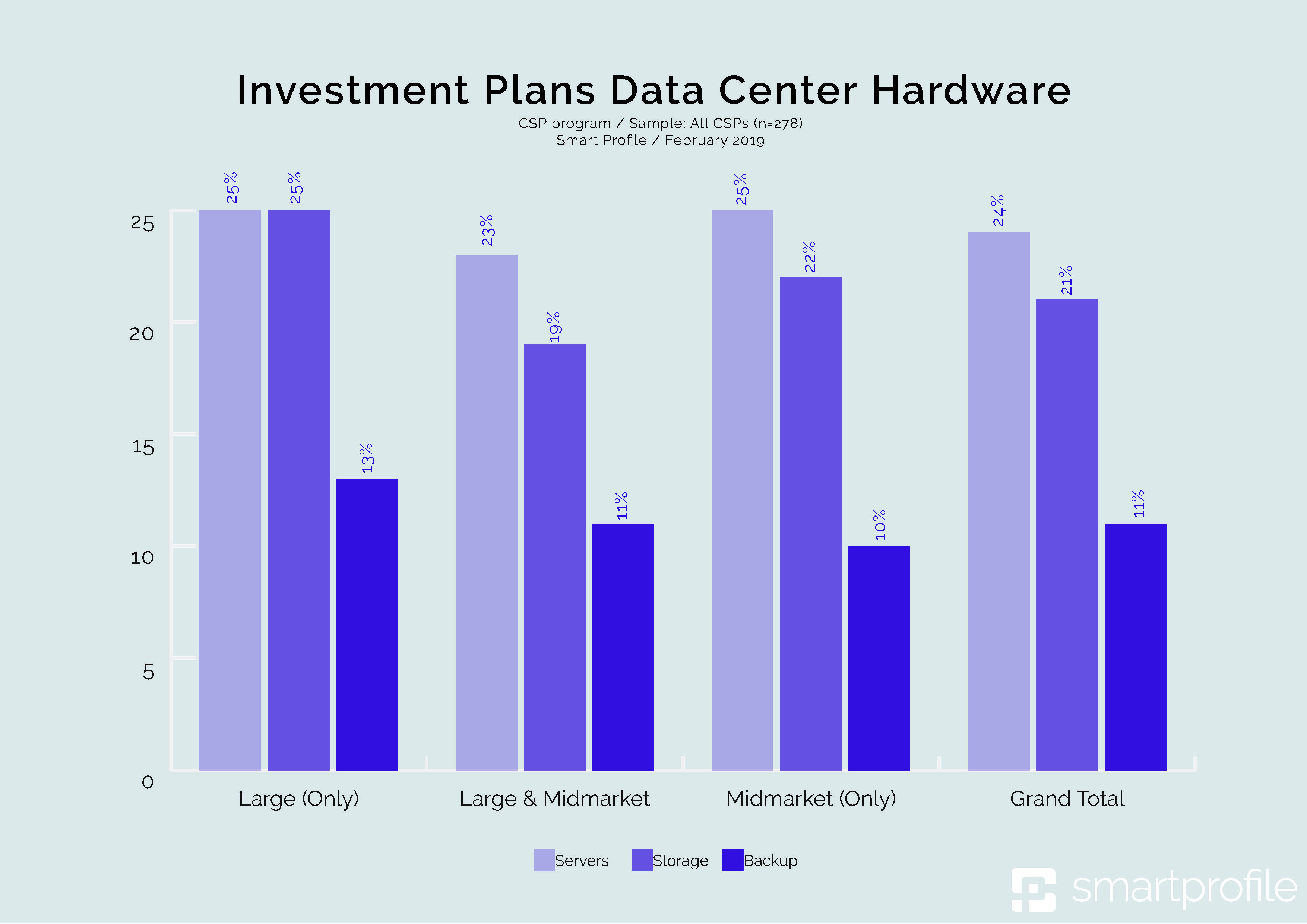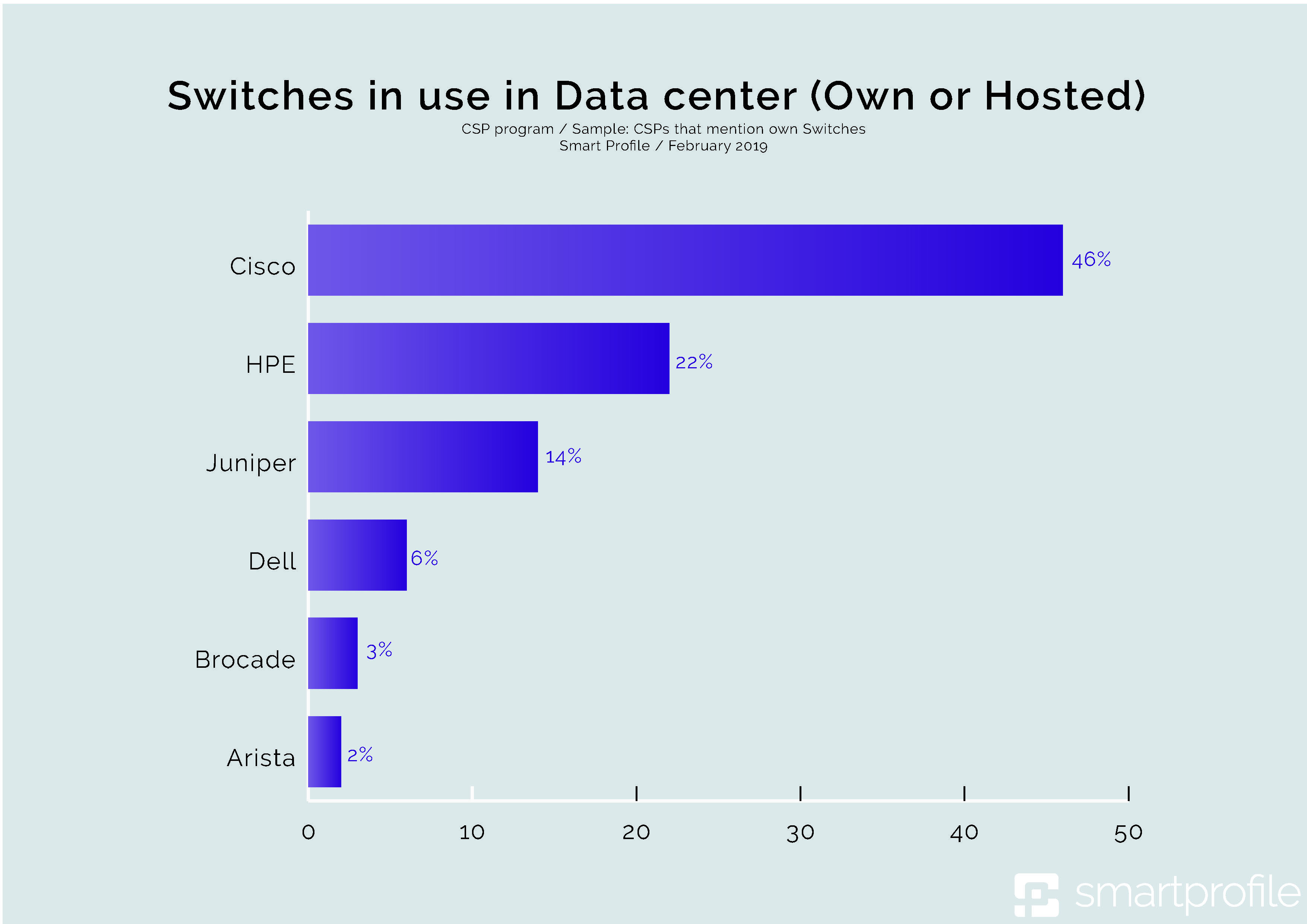Cloud Service Provider research 2019: growing investments in the usage of Cloud
Whether it is a simple application for time registration or a cloud infrastructure for the most critical business processes, almost every Dutch organization does something with the cloud. To map which cloud solutions organizations choose and what the channel for these solutions looks like, Smart Profile has carried out an extensive market analysis and an end-user analysis for Dutch IT Channel based on the market intelligence that Smart Profile continuously maps and updates. This creates a complete picture of the market, elaborated in this article. The Cloud Service Provider analysis makes it clear, among other things, which strategy suppliers are using now and in two years and you will discover what the trends are that you can respond to. You also get valuable insights into the end-user market for cloud solutions.
Analysis Cloud end users
For the survey among end users, Smart Profile interviewed 7800 organizations with more than 50 employees. The analysis shows that 68% of organizations use one or more software solutions from the cloud. This is a slight increase compared to last year. Multinationals and the government are the most cloud-minded with 77% and 78% respectively of the organizations that have SaaS solutions. Across all types of organizations, the trend for using more SaaS applications continues steadily, with multinationals opting for SaaS more often in 2018 compared to 2017.
Use of SaaS solutions
With a penetration rate of almost 93%, education is the sector in which SaaS solutions are used the most. This can be explained by the fact that the online learning environments and student administration systems that almost all schools use are running in the public cloud. Furthermore, ICT & Utilities (79.8%) and healthcare (69.1%) are at the top when it comes to the use of SaaS applications. Although the transport sector shows the least number of organizations with cloud applications, just like last year, penetration here has grown fastest by 4.9 percentage points to 54.4 percent. The same development can be seen in the construction sector with a growth of 3.5 percentage points to 59.2%.
Most Cloud applications for office automation
Of all the SaaS solutions that are used, the majority concerns applications for office automation (24.7%). This is a slight increase compared to last year (22.7%), which according to Smart Profile is mainly due to the growing use of Office365. HR solutions follow with 18.8%. Vector-specific applications aimed at, for example, education or healthcare account for 11.5% of all SaaS solutions used.
Microsoft largest supplier SaaS solutions
With 39.7% of the respondents, Microsoft is the largest supplier of software from the cloud. This mainly concerns Office365, SharePoint and Exchange. This shows a growth of 7.6 percentage points compared to last year. Places two to five are occupied respectively by AFAS (10.2%), RAET (8.1%), Salesforce (5.9%) and Schoolmaster (5.1%).
Oracle loses market share in the field of marketing automation
The Smart Profile analysis of the end-user market further shows that with 31%, Oracle Eloqua is the most used marketing automation solution from the cloud. The hot breath of Salesforce Pardot, however, is felt in the neck: 29.8% of respondents who use a marketing automation solution from the cloud indicate that they have chosen Salesforce Pardot. Adobe’s Marketo (15.3%), Hubspot (13%) and Act-on (7.3%) solutions complete the top five.
Interestingly, the numbers 3.4 and 5 have all grown at the expense of the leader. Last year, Oracle Eloqua was still used by 37% of the respondents. It also appears that Salesforce Pardot is mainly leading in the transport sector and manufacturing. Eloqua is used relatively frequently in retail and Marketo is, after Eloqua, a strong second supplier for the ICT & Utilities sector.
Microsoft Azure market leader in public Cloud
The growing popularity of the cloud is also reflected in the increasing adoption of cloud capacity in the data center. Overall it almost doubled (from 10.8% at the end of 2017 to 19% at the end of 2018). In all branches there is a significant increase in cloud capacity that is purchased as IaaS or PaaS.
The largest supplier of public cloud in the data center is Microsoft. 79.5% of the organizations that use cloud capacity indicate that they use Azure. Amazon follows with 21.7%.
If, however, we look at all organizations with more than 50 employees in the Netherlands, then we notice at 15% of all locations Microsoft Azure against 4% for Amazon Web Services. The difference between Microsoft and Amazon is strikingly large within the public sector (government, health care and education).
Analysis of the ICT Channel
According to the CBS, the entire IT market consists of 72,910 organizations, of which there are 3,535 companies with more than 10 employees. Within this segment, Smart Profile focused on the 1,587 most important parties in the market for the analysis.
Of the 1,587 organizations that were interviewed, 42% are Independent Software Vendors (ISV’s). For 14% their main activity is the delivery of IT Services and 12% is a Managed Service Provider (MSP).
In addition to the main activity, organizations also have other activities such as providing cloud services. For example, 8% of the organizations indicate that the main activity is Cloud Service Provider (CSP), but we see that a total of 47% of the organizations offer cloud services, for a large part as “ancillary activity”. A good example of this is KPN, whose core business is the provision of telecom services, but also provides a multitude of IT services, including cloud services. In general, Smart Profile sees that there is more and more supply from the IT market for cloud services. A logical explanation for this is that there is also an increasing demand for these services and that suppliers respond to this.
Analysis Cloud Service Providers (CSP’s)
The Smart Profile CSP survey was conducted among 278 organizations, of which the management or C-level manager was questioned. Of these Cloud Service Providers (CSPs), 5.8% focus exclusively on the enterprise market, 40.6% focus solely on the midmarket and 50.4% focus on both.
Distribution of IaaS, SaaS, PaaS and co-location
Of the CSPs that Smart Profile interviewed, 80% provide IaaS services. SaaS solutions offers almost the same proportion (79%). Furthermore, 53% of the CSPs focus on PaaS and 36% offer co-location. Outliers are particularly noticeable with CSPs that are only active on the enterprise market. Here 88% of the CSPs have SaaS in the portfolio and only 13% indicated that they offer co-location services.
Cloud only or hybrid strategy among CSPs is expected to strongly increase
Smart Profile also asked CSPs how they serve their customers and which strategy they use for their services. 40% of the Dutch CSPs have a cloud only strategy. 23% only provide services from their own data center. Furthermore, 37% of the CSPs offer a hybrid solution, for which both own and external capacity is used. The latter is involved via, for example, Microsoft Azure or Amazon Web Services. External capacity can also be private or public cloud or rented server capacity via an external data center. With CSPs with more than 500 employees it can be seen that only their own data center is not part of the chosen strategy and the full focus is on cloud and hybrid solutions that use external data center capacity.
For their two-year strategy, CSPs expect cloud and hybrid services to grow to 45% and 43% respectively. This is logically at the expense of solutions that are offered entirely from their own data center. Only 12% of CSPs are expected to opt for this in two years time. From this it can be concluded that CSPs opt more for flexibility in the capacity they can offer with fewer risks and investments that must be made in advance.
Sales growth in all segments
Not surprisingly, CSPs, regardless of the market segments in which they operate, expect their cloud service revenues to increase. In the next two years, this is about revenue growth from CSP activities of no less than 13.8 percentage points.
Microsoft largest supplier of Cloud capacity among CSP’s
Most Cloud Service Providers use Microsoft Azure (56%) to deliver their services. Amazon accounts for 11% of the CSPs cloud capacity. Google follows at an appropriate distance with 3%. Private Cloud (26%) is frequently used based on a multi-cloud strategy.
Investments of CSP’s in data center hardware
Smart Profile also asked CSPs about their plans to invest in their own data center hardware in the form of servers, storage and backup. In addition, 24% of the CSPs indicate that they have plans for investing in servers. 21% are going to put money into storage solutions. Only 11% opt for investments in backup. An explanation from the CSP’s is that backup is often already offered in a public cloud, which means that it is less necessary to invest in it yourself.
Which hardware suppliers are leading in het data center?
When it comes to the hardware that CSPs use in their own or hosted data center, there are a few suppliers that dominate the market. For example, the switches used in CSP’s own or hosted data center come from Cisco in 46% of the cases. HPE is the second supplier in this area with 22%. Juniper follows with 14% as a third party and the rest of the switches at CSPs are supplied by Dell EMC (6%), Brocade (3%) and Arista (2%).
HPE most often delivers server hardware to CSP’s
Server hardware used in CSP’s own and / or hosted data center(s) is most often supplied by HPE (38%). Dell EMC server hardware is found in 28% of the data centers. The gap between the numbers 1, 2 and the rest of the suppliers is large. The third-party supplier IBM can provide server hardware for CSPs in 9%. The analysis of Smart Profile also shows that VMware and Microsoft are the provider when it comes to server virtualization in the data center. For example, 52% work with VMware and 22% with Microsoft.
Dell EMC leading in storage hardware, VMWare market leader in storage virtualisation
For storage in its own and / or hosted data center, 28% of CSPs chose Dell EMC and 25% HPE. NetApp and IBM follow with 12% and 9% respectively. It is not surprising that in 2018 VMware was also a leader in storage virtualization. 43% of the CSPs work with the Dell EMC subsidiary. The second supplier for storage virtualization is Microsoft, which controls 13% of the CSP market.
Veeam leading in back-up solutions among CSP’s
The backup solutions that CSPs use in their own and / or hosted data centers are more than a third from Veeam. The numbers 2 and 3 Dell EMC and Commvault follow at great distances with 8% and with 7% in the CSP market.








